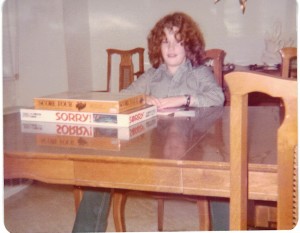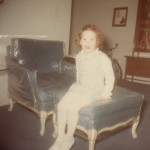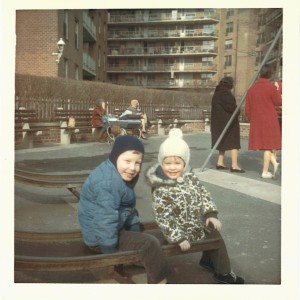Both of my parents grew up in extended family settings that included a Yiddish grandmother with limited command of the English language. While they both claimed to have forgotten Yiddish, various words crept into their vocabulary from time to time while we were growing up. Some were authentic, some were altered to suit their mood, and others were just nonsense words that generally had some root in Yiddish. A large percentage of the words seemed to end in “luch,” which can only be pronounced properly if you make a motion with your tongue and teeth as if you are trying to gather large quantities of flem. Here are the words that stand out for me.
- pe-pair-luch: tiny pieces of paper. Once a week, the living room was divided into three pepairluch sections and each child was required to pick up all the pepairluch in their designated area. Obviously our vacuum cleaner didn’t have a pepairluch setting, so we got stuck taking care of this.
- feets-e-luchins: of or having to do with the feet as in “are your feetseluchins cold?” or “your feetseluchins smell.”
- sweets-e-luchins: term of endearment, usually used by my father when referencing me.
- jay-gee-luchins: term of endearment used by my father reserved specifically for my mother whose first name begins with a J.
- schluffy: sleep; also go schluffy or make schluffy.
- eggies: eyes; only used when dad wanted us to go to sleep as in “close your eggies and go schluffy.”
- halucious: ugly; usually used by mom, as in, “Your hair looks halucious; when was the last time you combed it?” or “Those earth shoes are halucious”
- oy: statement of displeasure; usually voiced by my father when mom bought something that was over $50.
- oy vey; see explanation above; the vey was reserved for purchases he disapproved of over $100.
- oy gevalt; same thing but pertaining to purchases above $200 that were non-refundable.
- futz: to mess around with something as in “Stop futzing with the color brightness on the TV.”
- patch-kuh: see above
- pochy: spanking; a sweeter, gentler way to describe a good beating.
- tchotchke: useless decorative crap; dad was always teasing mom about making patchkuh with the tchotchkes.
- feh; distasteful; usually used by my father when referencing foods he disliked such as liver, chicken, and raisins. Used by me occasionally to describe black licorice.
- keppie: head; only referenced by dad when we were sick. He would kiss our keppie and predict if we had a fever and then guess our exact temperature; he was always right.
- kevetch-a-la; kvetch is generally used as a verb meaning to complain; dad changed it from a verb to a noun, usually to describe whoever was the most annoying family member that day.
- shmegegge: annoying person; used interchangeably with kevetchala.
- shmatta; rag; usually referenced by mom when she was trying to convince dad to donate some piece of clothing to the Salvation Army.
In addition, my dad had several non-Yiddish nicknames for his children that he continued to use well into our 30’s and 40’s including:
- The Toogie Man: nickname for my brother Stuart; no known derivative.
- Beanie; nickname for my brother Jeffrey, derived from a cartoon called Beanie and Cecil.
- Boober: my nickname; thankfully my father stopped using this one once I hit puberty and was sporting a generous D cup. Unfortunately the fun with this nickname was just beginning for my brothers and I suffered because of it for years.
- Sweetie-petite-ee: my father’s other nickname for me that luckily replaced Boober.
Many of these words are now a big part of the vocabulary in my family and I’m lucky enough to have a sweetseluchin and a sweetie petiteee in my life who tolerate me when I kevetch about all the random pepairluch lying around the house and all the dirty socks that always seem to be on the couch, but never on their feetseluchins.


